To lose weight postpartum, go slow and steady
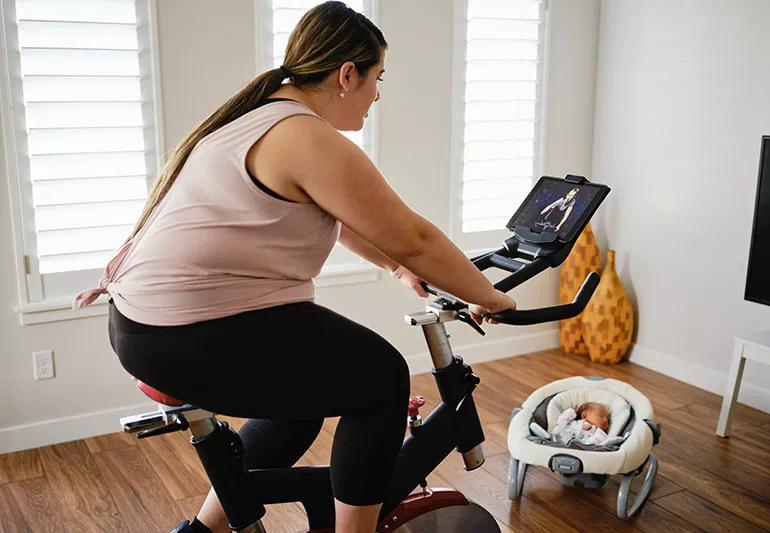
You did it! You grew new life and delivered it to the world. You’ve triumphed over the cravings and the back pain and the little human playing bongos on your bladder. You’ve reached the fourth trimester, the postpartum phase, and yet … you may still look more like your pregnant self than you thought you would. And you’re itching to ditch the maternity clothes.
Advertisement
Cleveland Clinic is a non-profit academic medical center. Advertising on our site helps support our mission. We do not endorse non-Cleveland Clinic products or services. Policy
How do you lose weight after pregnancy? And when can you start dieting and exercising after baby?
We talked with Ob/Gyn Kelly Buchanan, MD, about postpartum weight loss — what to expect and how to do it in a healthy way.
“You’ll want to take your time getting into an exercise and diet routine after giving birth,” Dr. Buchanan says. “Your body needs time to heal. Between delivery and having a baby to take care of, be gentle on yourself as you work on getting to a healthy weight.”
Gaining weight is to be expected for most pregnancies.
In addition to your baby’s weight, your scale will reflect extra pounds gained from:
It adds up to an average weight gain during pregnancy of between 15 and 40 pounds, though Dr. Buchanan says that can (and should) vary from person to person.
“This is a conversation I have with many patients. A lot of people who are pregnant want to know how much weight they should gain,” Dr. Buchanan says. “It really depends on where they start before pregnancy. If your BMI [body mass index] is lower than average, you may need to gain more. If it’s higher than average, you might not need to gain much.”
Advertisement
The average baby born in the United States weighs about 7 pounds to 7.5 pounds. Throw in the placenta plus some blood and amniotic fluid, and, BAM, right after delivery, you should knock off about 10 pounds before you even leave the delivery room … right?
Well, maybe, Dr. Buchanan says.
“There’s a lot that you don’t lose right when the baby’s born. There are a significant number of changes that take place in your body when you’re pregnant. It will take time to go back to your pre-pregnancy state,” she says. “You may even gain a few pounds just from IV fluids during labor. It’s a pretty variable number of what you’re going to weigh between when you go in to have the baby and a couple days later when you walk out with your newborn.”
Within a few days after birth, those loose ligaments start to tighten back up. Your uterus begins to shrink back down. Your extra blood and fluid volume decreases. All that swelling will start to recede. (Hey, look — it’s your toes!)
After about a week postpartum, you’ll have lost the majority of the “delivery weight” — the pounds that just drip off by virtue of no longer being pregnant.
At that point, you’ll know better what you’re working with, and you can start to think about working on the rest of it, if that’s right for you and your body.
“If healthy eating and regular exercise were a part of your life before baby, you’re probably going to lose any pregnancy weight a little faster. If diet and exercise are new to you, it might take longer,” Dr. Buchanan says.
After you leave the hospital, you’re not going to be jumping into major physical activity right away. You’ll probably be a little sore, especially if you had stitches or a cesarean delivery (C-section). You’ll be acclimating to a new sleep routine (or lack-of-sleep routine). Your doctor will likely recommend you don’t carry anything heavier than about 10 pounds. Those instructions may be more restrictive if you had a C-section.
As the haze of those early newborn days lifts, you might consider where to start getting back to some physical activity. Dr. Buchanan offers these suggestions.
There’s one exercise you should start soon after giving birth — Kegels. As soon as it’s not painful to do, Dr. Buchanan recommends working on your pelvic floor muscles (those are the ones down deep in your belly that help control your below-the-belt bodily functions).
You can do Kegels by working to start and stop your urine stream while you’re on the toilet. It probably won’t work so well at first. That’s normal. Keep at it to bring tone back to your pelvic floor. That will help with urinary continence (aka, keeping you from peeing when you laugh or sneeze).
Advertisement
When you’re feeling able, probably soon after you get home from the hospital, walking can help refresh your mind, get you back into shape and avoid blood clots. Start with short walks down the street, or take a lap around an indoor mall if it’s cold out. Take your time, and don’t expect to go too far at first.
It’s no secret that pregnancy will stretch out your belly. For some people who are pregnant, the result can be abdominal muscles that separate down the middle, a condition called diastasis recti. About a month after a vaginal birth, longer after a C-section, your doctor may clear you to start working on reconditioning your core.
A strong core is about much more than looking good in a two-piece. Your midsection provides stability for your everyday life — walking, twisting, bending and, yes, carrying around that little bundle of joy.
Good core exercises in the postpartum phase include crunches, planks and bridges.
Dr. Buchanan says your doctor may also suggest a postpartum belly wrap to support your trunk after giving birth.
Dr. Buchanan advises saving running, weight-lifting and generally sweat-inducing exercise until at least four weeks after giving birth.
“When you go back to more intensive exercise, remember, you’ll need to recondition yourself,” she adds. “You don’t want to start out where you left off. Start yourself up slowly. And be careful about the higher impact exercises for a little while.”
Advertisement
Throughout your pregnancy, you probably heard a lot about the importance of eating a healthy, well-balanced diet. That’s still the case.
If your baby is formula-fed, Dr. Buchanan suggests continuing a healthy diet in the postpartum phase will help you recover from birth. Avoid any crash diets at this time. You’ll want steady, consistent energy for those late nights and as you acclimate to caring for your baby’s needs.
Take cues from the Mediterranean diet by prioritizing:
If you’re breastfeeding, you don’t want to restrict your calorie intake. In fact, Dr. Buchanan says you’ll need about an extra 300 calories above and beyond your normal intake. (And don’t forget to drink plenty of water!) Make those calories count, by choosing nutrient-rich foods.
Research shows that breastfeeding can help you lose weight initially. You may find that a few stubborn pounds may hang around, though.
“People who are breastfeeding tend to drop weight a little bit faster because you use up a lot of calories breastfeeding, but then you might reach a plateau where your body holds on to the rest,” Dr. Buchanan explains. “That’s because your body will keep some reserves around to make sure you’ll be able to continue feeding the baby.” When your baby starts eating solid foods and you create less milk, your body will let go of those last pounds.
Advertisement
Bottom line: Dr. Buchanan reminds us that your postpartum body may not resemble what you see posted on social media. That’s OK.
“It makes it really hard when you when you see people on social media and celebrities and you think, ‘Oh, they just had a baby a month ago, and look at them, they’re completely back,’” Dr. Buchanan says. “That’s really a disservice because it’s just not reality. If you want to see what’s real, talk to the people you see in real life. Chances are, they take some time to get back to ‘normal.’ You probably will, too. That’s normal, and that’s healthy.”
Learn more about our editorial process.
Advertisement
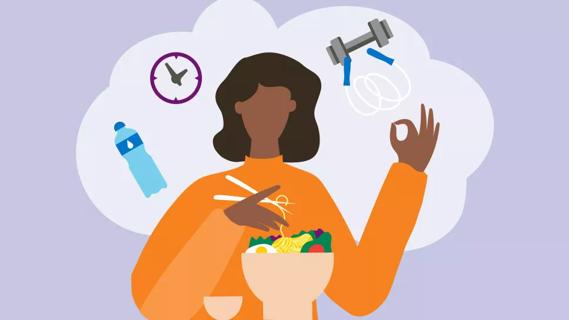
Actively choose healthy habits not only when it comes to food and nutrition, but also physical activity and your mental health
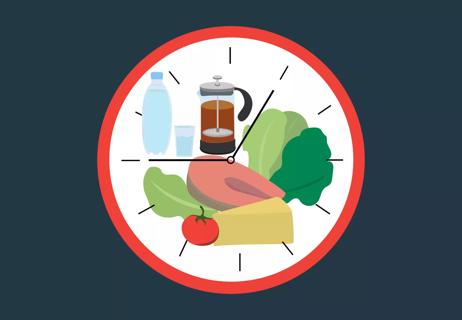
Trying fad diets and skipping meals won’t do you any favors

Wearing this undergarment for too long will do more harm than good
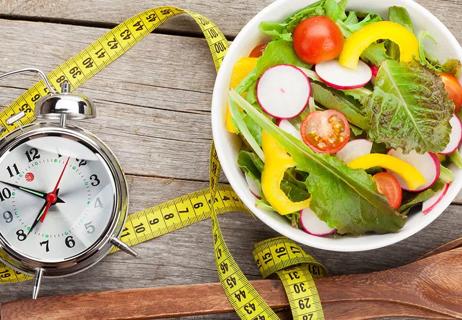
Quick weight loss is possible, but it’s not sustainable

You can lose 15% of your body weight, plus lower your heart disease and diabetes risks

A safe and effective surgery that shouldn’t be considered only as a last resort

Focus on physical activity and foods that pack a nutritional punch to help you lose weight
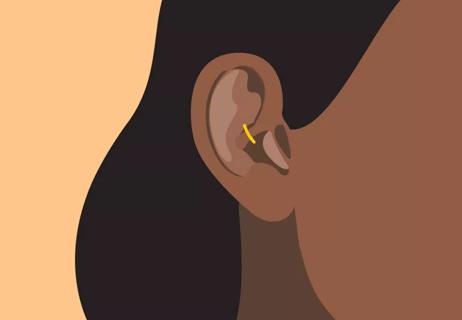
Skip this unproven, unsafe and unregulated weight-loss practice

Type 2 diabetes isn’t inevitable with these dietary changes

Applying a hot or cold compress can help with pain